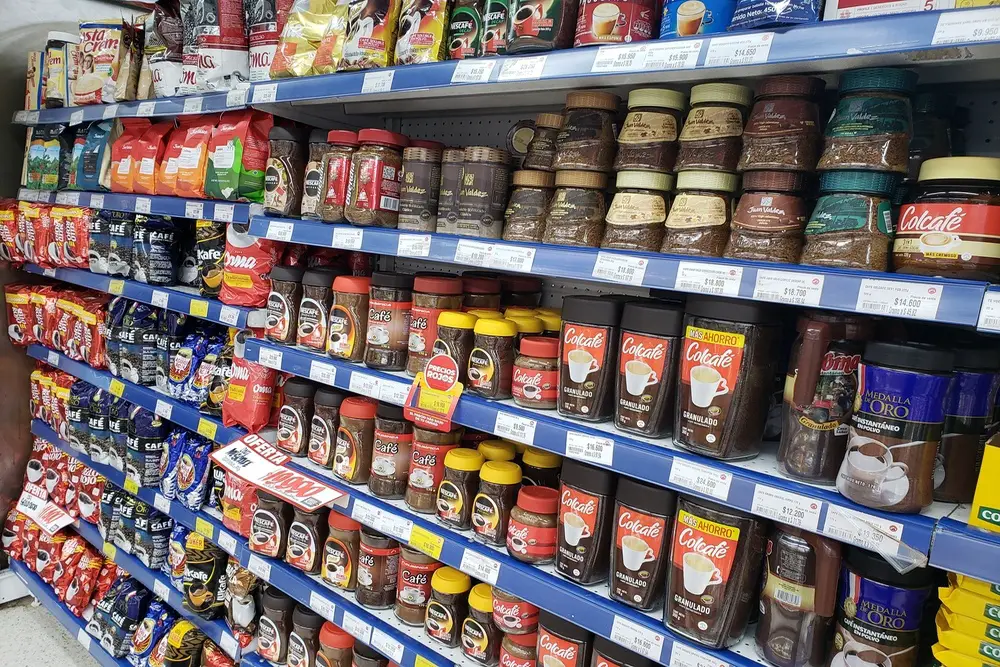Heirloom coffee is often mentioned as one type. However, this is not correct, because within the heirloom coffee there are between 10,000 and 15,000 completely different coffee variants.
In today’s market, many growers, roasters, and consumers are familiar with some types of heirloom coffee, but they don’t know the real name of this coffee variety.
Table of Contents
What is heirloom coffee?
The word ” heirloom ” refers to plants that have not been genetically engineered. It is known that some foods such as soybeans, wheat and others have been modified to make them more resistant to pests, change their size and add other characteristics.
Seeds collected and stored before 1951 are considered hereditary material. Because from this year the first transgenic (artificially manipulated) vegetables appeared on the market. Vegetables that are considered genetic include tomatoes, pumpkins, carrots, some red fruits, and citrus fruits.
In coffee growing, the meaning of the term ” heirloom ” is somewhat broader, as it is primarily used for varieties that originated in Ethiopia. There are estimated to be between 10,000 and 15,000 native species there. Of those, the vast majority has not yet been officially identified.
The species that have not yet been officially identified are classified in two different ways.
- JARC varieties by the Jimma Agricultural Research Center (JARC).
- Traditional varieties, which are wild coffee plants (organisms that live in a place without being introduced there).
Although the term ” heirloom ” is used around the world, Ethiopian coffee farmers have given names to all types of coffee trees, usually not the scientific name but local designations.
Types of coffee that fall under the ” heirloom ” designation
There are thousands of coffees originating in Ethiopia, not nearly all of which are identifiable. These differ from coffee plant to coffee plant in terms of taste, quality, disease resistance and many other characteristics. In some cases, these plants grow very close together in nature, making them even more difficult to identify.
Ethiopian coffee farmers exchange information about newly identified coffee trees among themselves, recording all information and passing it on; these new varieties are named after the year they were identified.
In many cases, the wild coffee plant is no longer cultivated, even though it and its product are well known, because it has certain requirements, and if these are not met, the end product can look completely different.
Here is a list of identified coffee trees and some of their characteristics.
Kurume coffee
This coffee was made in the Yirga area Cheffe, a town in south-central Ethiopia, where it was grown in the Guji and Gedeo areas. This type of coffee is characterized by its soft, delicate, floral aroma and low acidity.
It leaves a sweet, fruity taste in the mouth and its aroma is honey-like.
Geisha Coffee 1931
This type of coffee is perhaps one of the most famous in the world as it has a very significant history in the world.
The British discovered this strain in the 1930s near a mountain village called Geisha, hence the name. A few years after the discovery in 1953, some samples were sent to the Tropical Agricultural Research and Education Center (CATIE) in Costa Rica. Ten years later this coffee tree was planted in Panama where it produced an excellent coffee with exceptional characteristics, with a delicate taste with fruity aromas and with a gentle sweetness that gives an excellent aroma.
Dega coffee tree
The word “dega” means “cold zone of the highlands” in the native language, which is not only the name of this coffee, but also refers to the conditions of the soil on which these coffee plantations are grown, which is usually the city Gedeo is.
This coffee tree is named after a tree from Ethiopia that, when burned, emits the same smell as roasted coffee and has a pleasantly sour taste.
Agaro coffee tree
This coffee tree comes from the country’s coffee-growing region of the same name, where this type of coffee grows at an altitude of over 1,500 meters. This coffee was identified by the Food and Agriculture Organization of the United Nations (FAO) in the 1950s.
It has caramel, cocoa and nut aromas and a pleasant sweetness.
Coffee plant Wolisho
This coffee tree variety is grown at an altitude of 1,500 to 2,000 meters above sea level, so its berries are large and its leaves are very long. Because these coffee trees are grown at a high altitude, their fruit takes longer to ripen. At the same time, the beans are of excellent quality. Due to the quality of the beans, the recommended roast for this variant is medium.
The aroma of this coffee has hints of peach and orange and leaves a soft, floral taste in the mouth.
Tafarikela coffee tree
This coffee tree was made in Mizan in 1953 Teferi, a large region in southwestern Ethiopia. Distinguished by its small fruits and bronze-colored leaves, it usually grows in the rainy and mountainous areas of the country, as its fruits ripen earlier than those of the usual Arabica coffee trees.
Its taste is slightly acidic, with hints of chocolate, and it is naturally resistant to some fungi.
Lekemti coffee tree
This coffee tree is mainly grown in the towns of Ghimbi and Wollega at an altitude of over 1,500 m above sea level and is often associated with the Harrar Longberry variant compared, as it is very similar in taste. However, it differs in shape as the Lekemti variant is round.
Its taste is slightly fruity.
Abyssinian coffee
This coffee variant was discovered in south-east Ethiopia. After realizing that this variety was not of the best quality, it was brought to Indonesia in 1928. The local weather conditions and the soil favor the qualities of the plants. Today, Abyssinian coffee is a variety with a strong character.
Its taste is pleasant, soft and floral, but its smell is strong and acidic.
Barbuk Sudanese coffee tree
This coffee tree was discovered in 1942 in what is now Boma National Park near the Ethiopian border. The plant has good resistance to pests, so it is popular with farmers.
Its taste is powerful, with high acidity and floral aromas.
Coffee variety 74110
This strain was obtained from a coffee tree known as the mother tree. That is, from the trees that had the purest coffee fruit. After studies and research, it was found that this strain is resistant to diseases that directly affect the coffee fruit. He was born in 1979 by the Jimma Agricultural Research Center (JARC) launched.
The taste is sweet and pleasant, with hints of cocoa.
Coffee variety 74112
This variety is very similar to the previous one, it was also obtained from a mother tree. The variety went through a process very similar to that of variety 74110. Its properties were studied and its resistance to certain pests was established. In fact, the coffee trees and the fruit are very similar between these two varieties, with small differences in the sweetness of the 74110 variety and a slight acidity in the 74112 variety.
Heirloom coffees
Most of these coffees are considered specialty coffees due to their rarity. They are usually picked by hand and processed wet.
- The coffees processed in this way have fruity and floral aromas and a more pronounced acidity.
- Cleaning the coffee fruits, the berries are washed in tanks filled with water and then separated.
- Digestion of the coffee, with the help of machines the berries are pressed into plates and the remains of the fruit and the bean are separated by the pressure.
- Coffee fermentation, the best beans are placed in fermentation tanks for two to three days.
- Coffee drying: Coffee beans are usually dried in the sun.
After sorting the coffee, the beans are packed into bags.
Why should you know every coffee by its real name?
According to Ethiopian coffee experts, knowing the specific names and varieties of the different coffee plants would have a positive impact on harvests.
All actors would benefit because if the farmer knows the different varieties and their characteristics, he can deduce which crop is the most suitable for his land or if he can even grow multiple crops of different species to get more profit in different markets.
Consumers will get a better-quality end product, knowing from the start that they are buying the product they want and not one found in the heirloom coffees.
Problems with knowledge of coffee
Knowing the individual types and types of coffee can have negative consequences.
- Each variety has its own set of requirements, and failure to meet these can result in an entirely different product.
- Coffee with different properties is grown in each region of Ethiopia.
- Buying single-variety coffee can be very complicated.
- Farmers often mix some varieties in the crops, if the buyer only wants a specific variety, they cannot fully sell their product.
- The buyers should contact the farmers to agree on the quantity required by the farmer.
- It is difficult for everyone involved in coffee production to know a wide range of coffee varieties.
- Although these are Ethiopian coffees, in many cases they are not adapted to the different climatic conditions.
Characteristics of heirloom varieties
The inherited coffees from Ethiopia tend to be Arabica coffees, which is associated with a higher quality, emphasizing the natural wet processing and the roast being shorter as these grains are smaller.
The predominant flavor in these coffees is fruity and floral, but due to the cultivation method, which tends to mix the types, it’s not uncommon to taste coffees that have fruity flavors on the first sip and floral flavors on the second sip.
How is heirloom coffee roasted?
Due to the immense variation in coffee trees in Ethiopia, roasting varies widely, which is why coffee experts state that roasting should be controlled in a number of ways.
Depending on the bean that is harvested, several small batches are roasted to find the best roast.
Another common method is to roast small batches of coffee, spaced one minute apart, to examine the texture, flavor, and color to determine which roast works best with the different beans.
There is no set method, but each coffee farmer and roaster can decide for themselves how they want to roast their coffee; the roasting recipes are even shared within the Ethiopian coffee community.
Conclusions
Ethiopia is the cradle of all coffee varieties, so to speak, and there is still a huge amount of undiscovered varieties.



